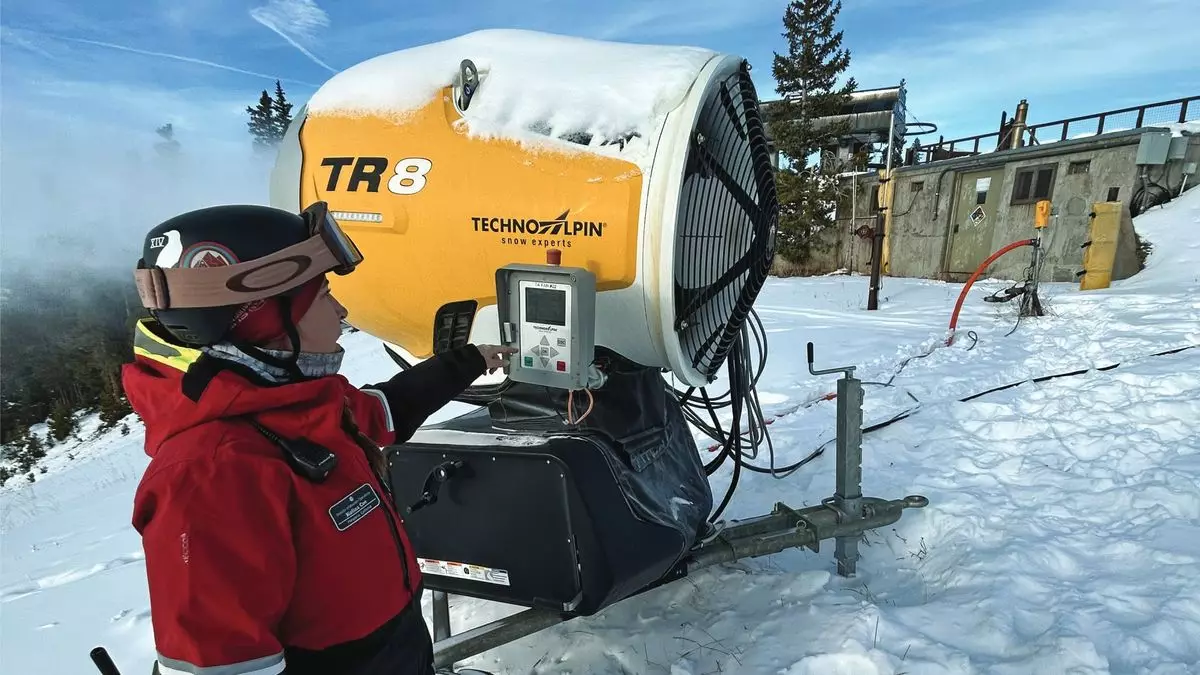As the winter season approaches, ski resorts gear up for the onslaught of visitors eager to carve their paths down freshly powdered slopes. One such venue, Keystone Resort in Colorado, sets a prime example of modern snowmaking strategies. Located at a staggering elevation of 11,640 feet, Keystone’s approach to transforming water into snow before the official start of the ski season reveals an intricate blend of technology, sustainability, and sheer enthusiasm.
In the past, ski areas relied heavily on natural snowfall to define their opening days, often leaving skiers at the mercy of the weather. However, the advent of advanced snowmaking technology has drastically altered this landscape. With 672 fixed and mobile snow guns at their disposal, Keystone strategically covers approximately 40% of its 3,148 skiable acres. This ensures a consistent and reliable base of snow that not only enhances the skiing experience but also boosts the resort’s profitability and operational viability.
The effectiveness of artificial snow production is amplified by precise temperature and humidity measurements, which aid in determining the ideal conditions for snowmaking. For instance, during my visit to Keystone, the resort’s sophisticated machinery indicated that while the air temperature was a mere 32.9 degrees Fahrenheit, the low humidity levels allowed for a more favorable wet-bulb temperature of 21.7 degrees. This ability to produce snow under less-than-ideal conditions offers a safety net for ski areas as climate change poses new challenges to traditional snowfall patterns.
Keystone’s commitment to enhancing its snowmaking operations isn’t just about keeping pace; it’s about getting ahead of the curve. By investing in 53 modern snowmaking machines and new piping systems back in 2019, the resort has managed to push its average opening date to October 27. This is a substantial improvement from the November 8 average recorded over the preceding six years. Such advancements position Keystone as one of the earliest mountains to open in Colorado, attracting eager skiers even before the holiday rush.
This proactive approach reflects the larger trends dominating ski resorts across North America. With various winter sports destinations adopting similar practices, there is a collective effort to adapt to changing climate conditions while maximizing operational efficiency. By ensuring that they can reliably offer early-season skiing, resorts not only enhance their market appeal but also encourage year-round patronage.
While the capacity for snow production is critical, so too is the conversation surrounding sustainability. In a world increasingly concerned about environmental impact, ski areas like Keystone are committed to reducing their ecological footprint. Efforts are ongoing at Keystone and within the broader Vail Resorts brand to implement renewable energy practices across all operations. As the company celebrates achieving 100% renewable electricity across 37 North American resorts, the aspiration for a net-zero operation by 2030 appears attainable.
Kate Schifani, one of Keystone’s mountain operations directors, underscores the ongoing dialogue regarding technological advancements and resource management in snow production. “With the advances in technology, you can actually do more with less,” she states. The focus on more efficient snowmaking practices aligns perfectly with the company’s overarching goal of sustainable operations.
Automation has emerged as a focal point of this strategy, cutting down the time required to initiate snow production and reducing the number of staff needed for operations. The automated systems enable quick adjustments to changing weather conditions, allowing for maximized snowmaking during optimal times—a significant leap forward from previous manual methods.
Incorporating these technological and sustainable advancements positions Keystone, and similar resorts, as pioneers in the ski industry. With approximately half of Keystone’s snowmaking stations now automated, the trend toward increased efficiency is evident. The potential benefits are profound, leading to less resource consumption, improved snow quality, and a more reliable skiing experience for guests.
As the program matures, the return on investment is assessed through energy gains and operational efficiency, showcased by nearby resorts that have seen staggering benefits from upgrades. Ultimately, this intentional approach not only secures the future of winter sports but also solidifies a responsibility to protect the environments where skiing takes place.
Keystone Resort stands at the forefront of a remarkable evolution in snowmaking technology, presenting an optimistic view toward winter sports in the face of climate change. They are not only ensuring ski enthusiasts can expect quality conditions at the start of every season, but they are also paving the way for a more sustainable future in the ski industry.


Napsat komentář